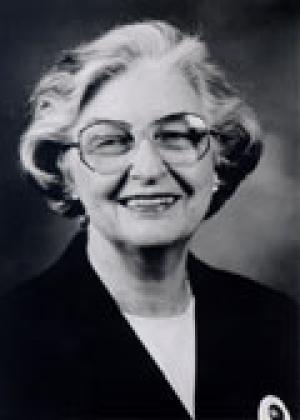Mission Statement
The Vaccine Research Center (VRC) discovers and develops novel vaccines and biologics targeting infectious diseases of global public health importance.
The VRC applies scientific and technological innovation to design, develop, manufacture and evaluate investigational vaccines and antibody-based products. Through a translational research infrastructure, the VRC advances scientific discovery into practical and accessible public health interventions.
Strategic Approach
To develop and advance investigational vaccines and biologics, the VRC
- Applies scientific and technological innovation to basic discovery;
- Utilizes structural characterization for rational immunogen design;
- Performs laboratory analysis, non-clinical evaluations, and clinical trials of vaccines and biologics;
- Collaborates with domestic and international partners in academia and industry for development and efficacy testing of vaccines and antibody-based products.
History and Background
The Vaccine Research Center was established through Presidential Executive Order in 1997. Named for lifelong vaccine and childhood immunization advocates former Arkansas Senator and First Lady Dale and Betty Bumpers, the Center was dedicated on the NIH campus in 1999 and opened its doors in 2000. For over 20 years, the VRC has pioneered basic, clinical, and translational science research programs that aim to advance vaccine and biologic product development targeting HIV/AIDS and other diseases of high public health importance.
Profile of Dale and Betty Bumpers

Senator Dale Bumpers, acknowledged leader on immunization issues during his time in Congress.
Senator Dale Bumpers (1925-2016) was best known for his long and distinguished career in public service in the U.S. Senate and his home state of Arkansas. Prior to becoming a U.S. Senator, Senator Bumpers was elected Governor in 1970 and served two terms. During his first term as Governor, his wife Betty first sparked his interest in the cause of childhood vaccination.
Bumpers was elected to the U.S. Senate in 1974. Throughout his 24-year career in Congress, he was the acknowledged leader on immunization issues. As a member of the Senate Appropriations Committee, he worked hard to increase funding for efforts to improve and purchase vaccines for childhood diseases like measles, mumps, whooping cough and polio, and to develop new vaccines against diseases like bacterial meningitis.
During the 1980s, his crusade on behalf of cost-effective immunization programs often resulted in Congress approving amounts above the Administration's requests. During the measles epidemic of 1989-1991, he rallied his colleagues by calling the 27,000 cases of measles in 1990 "both shameful and totally avoidable," and noting that there had been more deaths from measles in one year than there were combat deaths in the Persian Gulf. He was among the first immunization advocates to recognize the importance of requiring proof of immunization at school entry; reaching children through other programs such as cash assistance and the Women, Infants and Children feeding program; and focusing on children under two.
Throughout his Senate career, Senator Bumpers was also a champion of the National Institutes of Health, and an advocate of funds to fight HIV/AIDS. His support for appropriations for NIH helped answer fundamental questions about HIV/AIDS, and also supported research and development activities on vaccines generally.

Betty Bumpers, former First Lady of Arkansas, dedicated her life to issues affecting children’s health.
Betty Bumpers has also dedicated her life to issues affecting children’s health. When she became the First Lady of Arkansas, the state had one of the lowest immunization rates in the nation. Mrs. Bumpers spearheaded a system for childhood vaccinations that became a national model, and the state achieved one of the highest immunization rates in the country.
After her husband’s election to the Senate, Betty Bumpers continued to work on immunization issues with the Centers for Disease Control and Prevention and the wives of other state governors, including Rosalynn Carter of Georgia. Upon Jimmy Carter’s election as president, Mrs. Bumpers contacted the new administration, explained the deficits in the country’s immunization program, and urged that something be done to improve the situation. Her advocacy, and that of Rosalynn Carter, led to the federal government's first comprehensive childhood immunization initiative, which was launched in 1977 and was based on the successful state program adopted in Arkansas when Bumpers was governor. The efforts of Mrs. Bumpers and Mrs. Carter also led to laws, now in every state, requiring certain vaccinations before entry into school. As a result of these laws, more than 95 percent of American children are immunized by the time they go to school, and once-common diseases are now rare.
In 1991, Mrs. Bumpers and Rosalynn Carter started a campaign called "Every Child by Two." The organization has worked to ensure that all children in America are immunized on schedule from birth to age 2, and that immunization delivery is institutionalized nationwide. In recent years, Betty Bumpers also has worked on the global campaign to eradicate polio.

